Filed under: Uncategorized
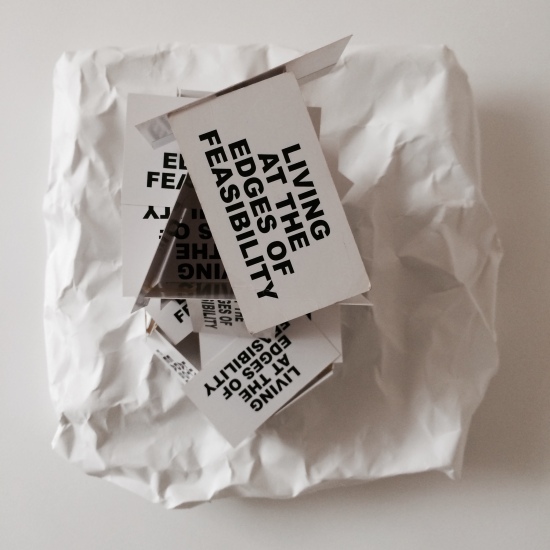 House of Cards, smudge studio, for Inhabiting Change workshop, Tromsø, 2014
House of Cards, smudge studio, for Inhabiting Change workshop, Tromsø, 2014
While in Tromsø, we’ve taken up residency at the small projects gallery at 23 Grønnegata. It’s a special architectural space, shared with the offices of the Sami Reindeer Holder’s Association of Norway. The building was designed in 1984/5 by Bl. Strek Arkitekter (Blue Streak Architecture). It is open to the midnight sun via walls and vaulted ceilings of windows, and it offers heated floors and only a few right angles. All of these make it a wonderful place to stage a workshop and exhibition entitled “Inhabiting Change.”
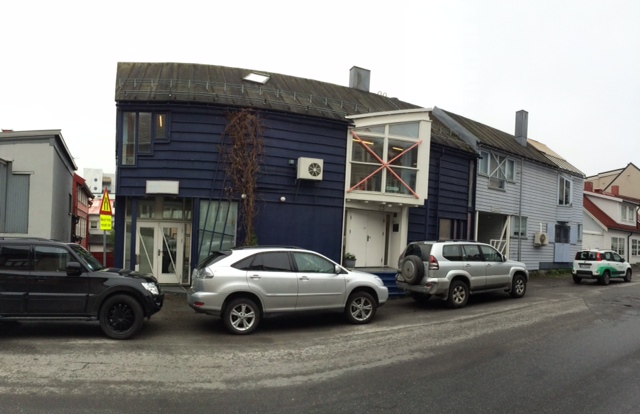 small projects, 23 Grønnegata
small projects, 23 Grønnegata
Our workshop invitation to prospective participants at the Tromsø Academy of Landscape and Territorial Studies and Tromsø Academy of Contemporary Art read:
INHABITING CHANGE | smudge studio
This workshop invites you to cultivate a broader gamut of personal and creative responses in relation to the volatile and vibrant material realities of big, fast environmental change. Over this three-day, hands-on workshop, we will design and build simple structures that will be exposed to forces of change. We will use the structures we build as means for tuning in to scales and agents of change as they move through and alter Tromsø. Our process will create a moving, responsive aperture onto materials and places as they disassemble and reconfigure outside of (or beyond) human desire and control. Our intention is to arrive at a new place in our individual and group orientations toward the following questions: What does it take to recognize our tendencies to describe natural and built environment change as “destruction?” How might we cultivate nuanced capacities to inhabit change and address change as life itself, that is, as a continuous “passing into vibrant nexts”?
Our group was composed of global travelers and transplants to Tromsø from France, South Africa, Canada, China, Russia, Serbia, Belgium, and the United States.
Across three days and environmental conditions that changed from hour to hour right outside the windows (snow, rain, wind, fast moving clouds that touched and reshaped the landscape and sunlight), our group set to work. During the first introductory day, we offered two different preparations of green tea. We brewed the same kind of tea through two different durations and offered the group a chance to taste how time acts as a material force of change. From there, we set up the group’s individual projects, inviting participants to experiment with using art, architecture and design as apertures onto specific forces and dynamics of change. Our aim was explore practices for attuning to forces of change and for preparing to work and live with uncertain planetary realities.
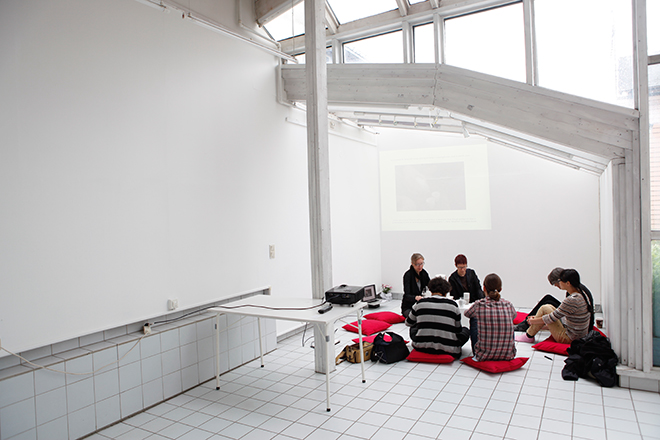 image Tanya Busse
image Tanya Busse
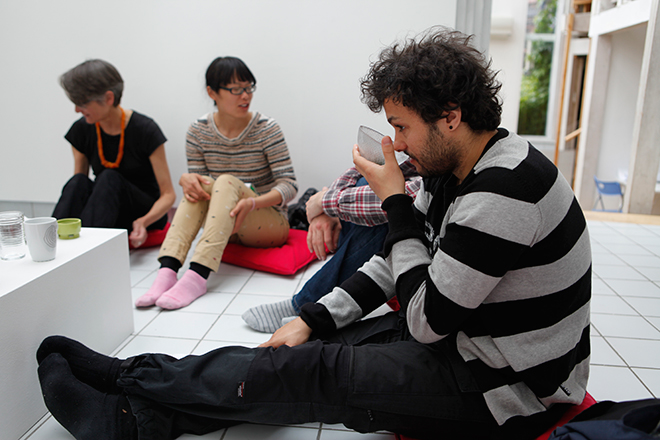 image Tanya Busse
image Tanya Busse
1/ BUILDING INTENTIONS (Day 1)
Build a three-dimensional structure. Design it with specific intentions in mind, for a specific purpose or to fulfill a need (shelter, aesthetic pleasure, to demarcate space etc.). Use any materials. Use the structure for its intended purpose and document the results.
FIELD NOTES: Take field notes on what you’ve built and why (notes on intention, form and function, how you came up with clear purpose and how you designed FOR that purpose). What is your process for approaching a project with a clear intention and purpose? How did your intention shape your choices during construction?
 Step 1 work of smudge studio
Step 1 work of smudge studio
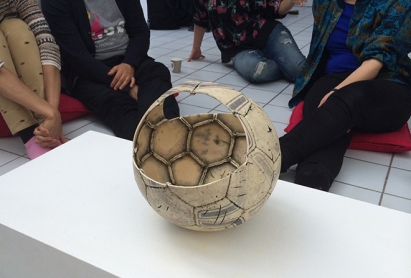 Step 1 work of Tanya Busse
Step 1 work of Tanya Busse
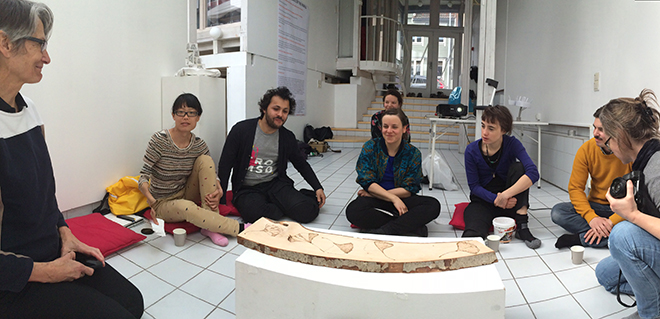 Step 1 work of Marsil Andelov Al-Mahamid
Step 1 work of Marsil Andelov Al-Mahamid
 Step 1 work of Wenjing Chen
Step 1 work of Wenjing Chen
 Step 1 work of Vlad Lyakhov
Step 1 work of Vlad Lyakhov
2/ RELEASE TO PLANETARY FORCES (Day 2):
Expose your structure to one or more nonhuman force of change (heat, cold, wind, humidity, pressure, air, gravity, motion, vibration, light, darkness, fire). Document your observations of how these forces of change affect your structure.
FIELD NOTES: Take notes on how your structure has changed in response to its encounter with non-human forces. Note what forces changed your design and how. Describe what it feels like to see your intended purpose changed by forces. Note what surprised you about this interaction.
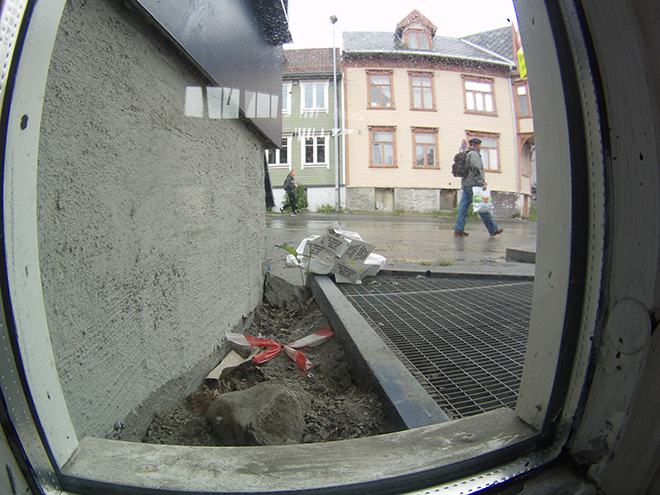 still from 12 hour exposure of smudge studio’s house of cards for step 2
still from 12 hour exposure of smudge studio’s house of cards for step 2
3/ CO-DESIGN WITH NON-HUMAN FORCES (Day 3):
Pass your changed structure off to another participant. Take the “new” structure that was passed to you and creatively respond to the nonhuman changes it has undergone. Repurpose/reconfigure the new structure into a new form or usage.
FIELD NOTES: Note what it feels like to work with an object that has been shaped by both non-human and human forces. Note how it feels to have your object altered again, this time by another human, with unexpected outcomes.
 Tanya Busse’s creative response to Vlad Lyakhov’s work, after he had exposed it to water
Tanya Busse’s creative response to Vlad Lyakhov’s work, after he had exposed it to water
 Isabel Schiltz’s creative response to Marsil Andelov Al-Mahamid’s work, after he had exposed to outdoors overnight
Isabel Schiltz’s creative response to Marsil Andelov Al-Mahamid’s work, after he had exposed to outdoors overnight
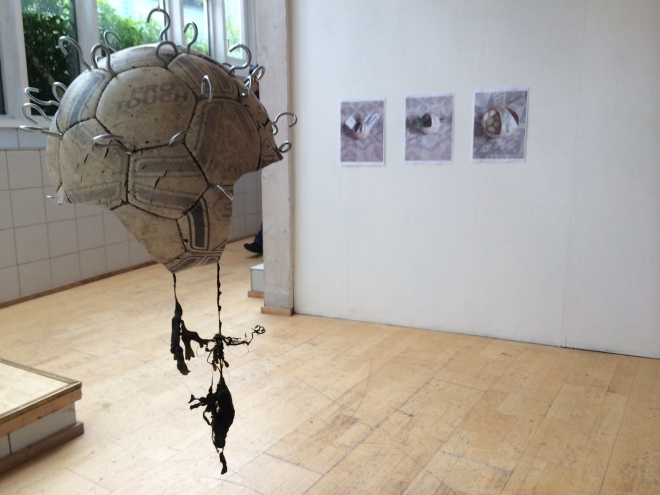 Marsil Andelov Al-Mahamid’s creative response to Tanya Busse’s work, after she had exposed it to the sea
Marsil Andelov Al-Mahamid’s creative response to Tanya Busse’s work, after she had exposed it to the sea
4/ DISCUSSION + PRESENTATION + EXHIBITION (Day 3):
How might emotional and conceptual responses to change be broadened so that what we habitually take to be “destruction” might be considered instead as “passing into something else”?
What stories can we activate from within these other emotions to describe the changes that have occurred to the structures we made in the workshop?
What connections between humans (and our designs) and the natural world has the workshop made sense-able?
How might we anticipate unpredictable change? How might we design for transformation? What happens when our creative process includes expectations of unpredictable change?
How might we develop capacities that allow us to consider long-term changes while acknowledging that the complexities of such changes will always escape and/or exceed us?
What different constellations of feelings and design responses are possible in relation to:
1) planetary/environmental changes of different scales and diverse human consequences, such as falling cherry blossoms, earthquakes or volcanic eruptions?
2) forces of change that meet the built environment and cause our intentional designs to undergo unexpected changes we do not desire (i.e. Fukushima Daiichi, coastal cities effected by climate change)?

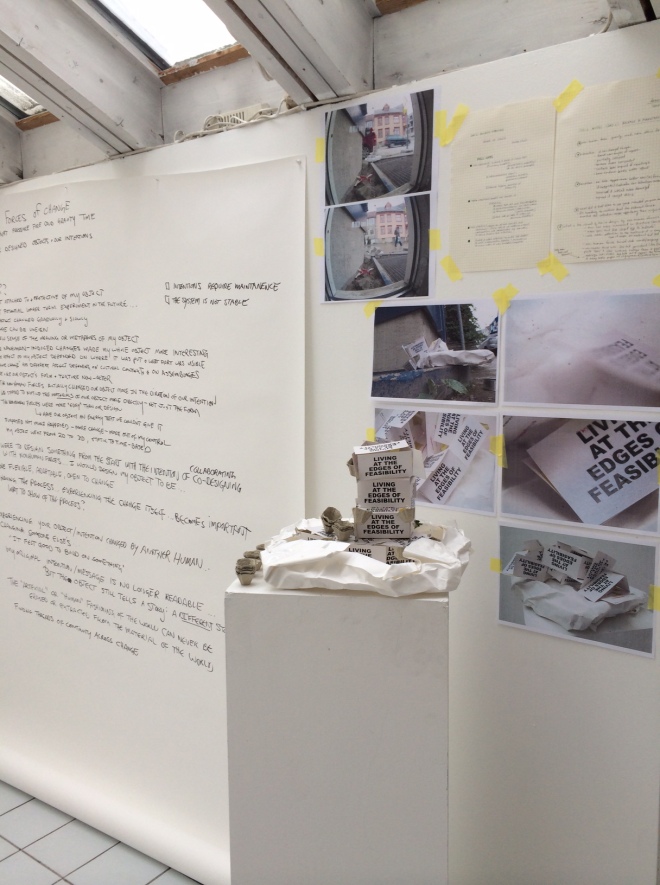

Leave a Comment so far
Leave a comment





